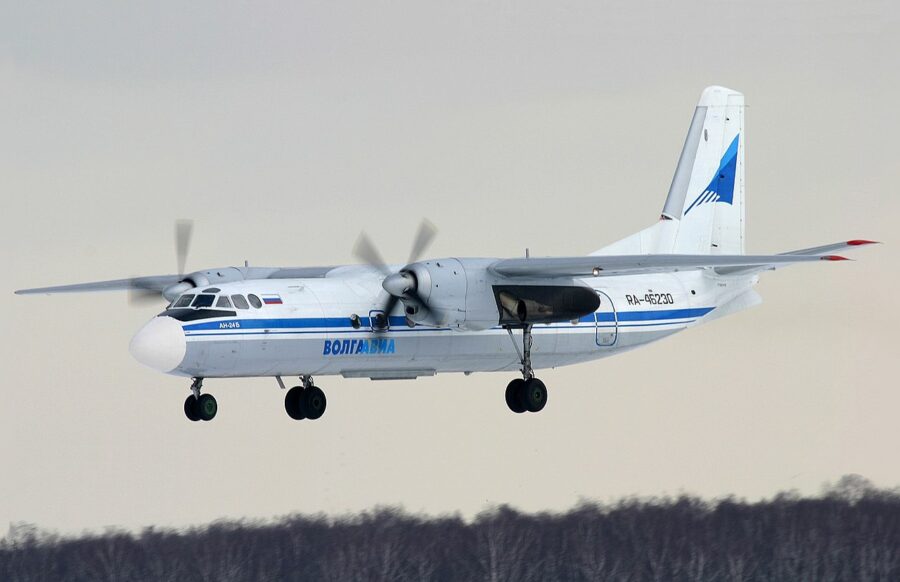Russian An-24 Plane Crashes in Far East, 48 Feared Dead

A Russian Antonov An-24 passenger aircraft carrying 48 people crashed in Russia’s Far East on Thursday July 24, killing all passengers and crew on board, according to regional authorities and federal investigators.
The aircraft, operated by Siberia-based regional airline Angara, was en route from Blagoveshchensk to the remote railway town of Tynda in the Amur region, which borders China. The twin-turboprop plane disappeared from radar while preparing to land. Shortly afterward, the burning wreckage was discovered on a hillside about 10 miles from Tynda by a Rossaviatsiya Mi-8 search-and-rescue helicopter.
“There are no survivors,” confirmed Amur Region Governor Vasily Orlov, who also declared three days of mourning for the victims. The Russian emergency services ministry reported on Telegram that rescue teams were still navigating rugged terrain to reach the crash site.
On board were 42 passengers—including five children—and six crew members. The Antonov An-24 involved in the crash was built in 1976, originally operated by Soviet-era Aeroflot, and was nearly 50 years old. It is one of 10 An-24 aircraft in Angara’s fleet, all built between 1972 and 1976.
Angara Airlines, headquartered in Irkutsk, serves destinations across Siberia and Russia’s Far East. A representative for the airline said they had no further details to share at this time. The Russian federal government has launched an official investigation into the cause of the crash and has formed a commission to handle the aftermath. The Kremlin confirmed that President Vladimir Putin was informed of the incident.
The Antonov An-24, often referred to as a “flying tractor” due to its rugged durability, has long been relied upon to operate in the harsh climates of Siberia. The aircraft’s ability to perform in sub-zero temperatures and land on unpaved surfaces has made it a staple of regional aviation. However, concerns over the aging fleet have grown in recent years, especially after Western sanctions imposed over the war in Ukraine have hindered access to parts and foreign investment in Russia’s aviation sector.
Last year, Angara and another Siberian carrier formally requested an extension on the operational lifespan of their aging Antonov fleet, citing the lack of immediate domestic alternatives. The cost of maintaining the aircraft has risen sharply, and despite efforts to develop new replacements, the successor to the An-24—Russia’s Ladoga regional aircraft—is not expected to enter mass production until at least 2027.
While the An-24 remains admired for its reliability in extreme conditions, aviation experts and pilots have warned that continuing to operate aging aircraft increases safety risks, especially in remote regions where maintenance infrastructure is limited.
First flown in 1959, the An-24 was produced in some 1,000 units of various versions; in 2023, 93 were still in service worldwide, mostly in the Russia, former Soviet USSR states, and Africa.
Thursday’s tragedy underscores the growing challenges facing Russia’s regional aviation network, as the country navigates technological gaps and supply shortages in a rapidly evolving geopolitical environment.
Related News: https://airguide.info/category/air-travel-business/travel-health-security/
Sources: AirGuide Business airguide.info, bing.com, reuters.com, nbcnews.com
